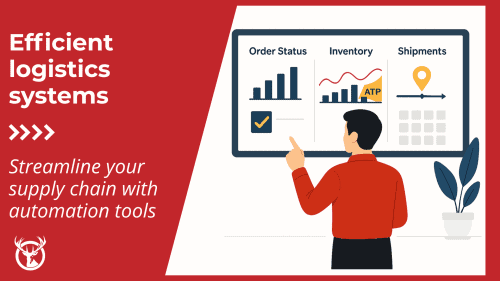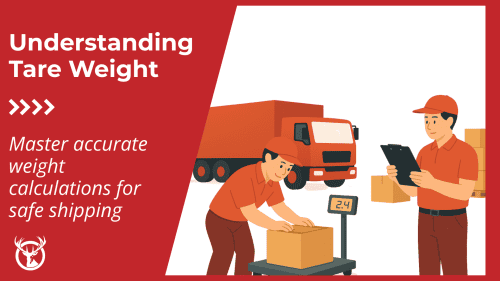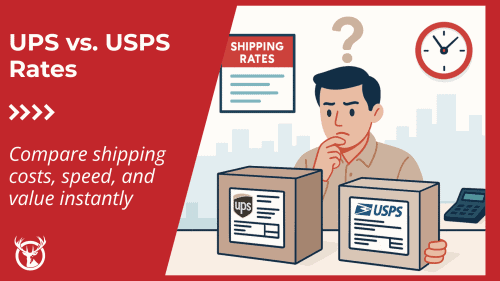Unlocking efficiency in your supply chain starts with a smooth devanning process. Devanning, the process of unloading cargo from a container, can make or break your bottom line.
This article dives into the steps involved in efficient devanning, the benefits you can expect, and how to overcome common challenges.

TL;DR:
Key takeaways

Devanning is the process of unloading goods from shipping containers at their destination warehouse or distribution center.

Efficient devanning improves warehouse space utilization, reduces costs, increases operational speed, and minimizes product damage.

The devanning process includes pre-arrival planning, safe unloading, sorting, and final delivery/distribution of goods.

Partnering with an experienced 3PL like Red Stag Fulfillment can streamline your devanning operations and optimize your supply chain.
What is devanning?

Devanning is the process of unloading goods from a container or truck once your freight reaches its destination, like a warehouse, distribution center, or store. You might also hear devanning referred to as unpacking, unstuffing, and stripping. The process often requires the use of forklifts or other heavy machinery.
While often confused with transloading (transferring goods from one mode of transportation to another), devanning specifically refers to unloading goods from a sealed container at its destination warehouse.
Efficient unpacking is vital to make sure your goods are safely unloaded, inspected, and prepared for the next stage in the supply chain. It requires meticulous planning, attention to detail, and adherence to safety regulations to prevent cargo damage and minimize the risk of accidents or injuries.
This is why many businesses outsource devanning services to an experienced third-party logistics company (3PL). These 3PL companies often have the required expertise to ensure smooth and efficient devanning. Their devanning fee will depend on the size, complexity, and weight of the container load.
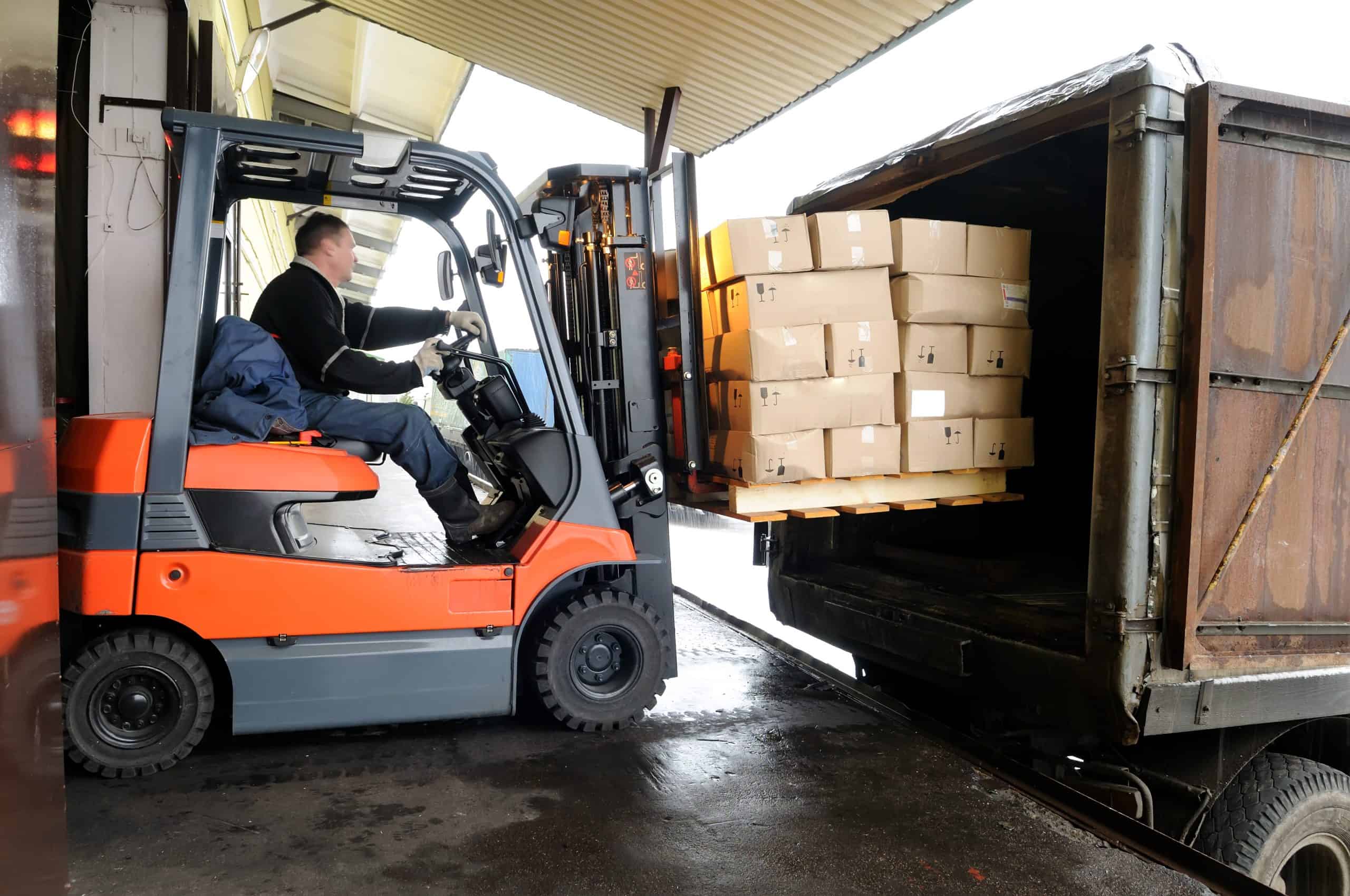
Devanning examples
Efficient devanning can have a significant impact on your operations and supply chain performance.
Let’s look at a couple of potential devanning scenarios:

An ecommerce retailer might implement an automated container devanning solution to handle holiday orders. By using robotics and conveyor systems for quick unloading and sorting, they could reduce turnaround times and improve order fulfillment rates, even during peak demand.

An automotive manufacturer faced significant delays and congestion at the port where its parts and components were shipped could work toward optimizing their devanning services and cross-docking processes to speed up receiving.
The devanning process: a step-by-step breakdown
Devanning involves several critical steps to guarantee the safe and efficient unloading of each sealed container.
Pre-arrival planning and preparation
01
First, you’ll need to decide who will handle the unpacking process. Whether it’s your team or a warehouse and logistics management company, you’ll want to iron out certain details in advance.
This includes:

Gathering the necessary documentation (e.g., bill of lading, customs paperwork)

Ensuring the required equipment is ready and in good working condition

NOTE: The specific equipment used for unloading cargo, such as forklifts, pallet jacks, or conveyor systems, will depend on factors like the size and weight of the full container load. The type of container it’s being unloaded from is also a consideration.
Safe and efficient unloading
02
Once your freight arrives, the unloading process begins. Safety is paramount during this stage. If you’re handling devanning services yourself, create safety protocols and share them with your team in advance.
All personnel should:

Adhere to strict safety protocols.

Wear appropriate personal protective equipment (PPE).

Keep the unloading area clear of obstacles and hazards.
It’s worth noting that the unloading process can vary slightly depending on the type of container being devanned. For example, unloading a 20-foot container requires different considerations than a 40-foot container or refrigerated unit.
Streamlined sorting and organization
03
After unloading is complete, goods are sorted and organized for the next stage in the supply chain:

Each item is labeled.

Inventory checks are conducted to ensure everything is accounted for and in good condition.

Goods are separated based on their final destination (e.g., retail store, warehouse, or logistics center).
This streamlines the next steps and makes sure your freight reaches its intended destination efficiently.
Efficient final delivery and distribution
04
The last stage involves loading your goods onto smaller vehicles for delivery to their final destination, which may include trucks, vans, or smaller containers.
Cross-docking is a strategy often used to minimize handling and storage time. It involves unloading goods from one vehicle and immediately loading them onto another for final delivery, without the need for storage in between. This can help reduce costs and improve overall supply chain efficiency.
Types of devanning: manual vs. automated
There are two main approaches to container devanning: manual and automated. The choice between these methods depends on factors such as the shipment size, nature of the cargo, and overall volume of goods being handled.
Manual devanning

Manual devanning is a labor-intensive process that involves workers physically unloading cargo from containers or trucks. This method is often used for smaller shipments or unique cargo that requires special handling.
While manual unpacking can be time-consuming and costly, it offers flexibility and customization that automated solutions may not provide.
Automated devanning

Automated devanning relies on technology-driven solutions to streamline the unloading process. These solutions can include robotics, conveyor systems, and other specialized equipment.
Automated unpacking is particularly useful for high-volume operations where speed and efficiency are critical. By minimizing human involvement, automated solutions can reduce the risk of errors and improve overall productivity.
The benefits of efficient devanning
Effective container devanning offers a range of benefits for businesses looking to optimize their supply chain operations:

Cost savings: Devanning can help lower overall logistics costs by reducing the need for manual labor and optimizing storage processes. This is particularly true for automated solutions that can handle high volumes of goods with minimal human intervention.

Increased speed: Efficient devaning significantly reduces turnaround times and improves supply chain velocity. By getting goods unloaded and ready for the next stage faster, you can quickly respond to customer demands and changing market conditions.

Reduced damage: Careful handling during the unpacking process minimizes the risk of product damage. Automated solutions, in particular, can handle goods with precision and care, reducing the likelihood of breakages or other types of damage.

Improved warehouse space utilization: Effective devanning helps businesses to improve their inventory management. By efficiently stacking and organizing goods as they are unloaded, you can maximize available storage areas and reduce the need for additional warehouse capacity.
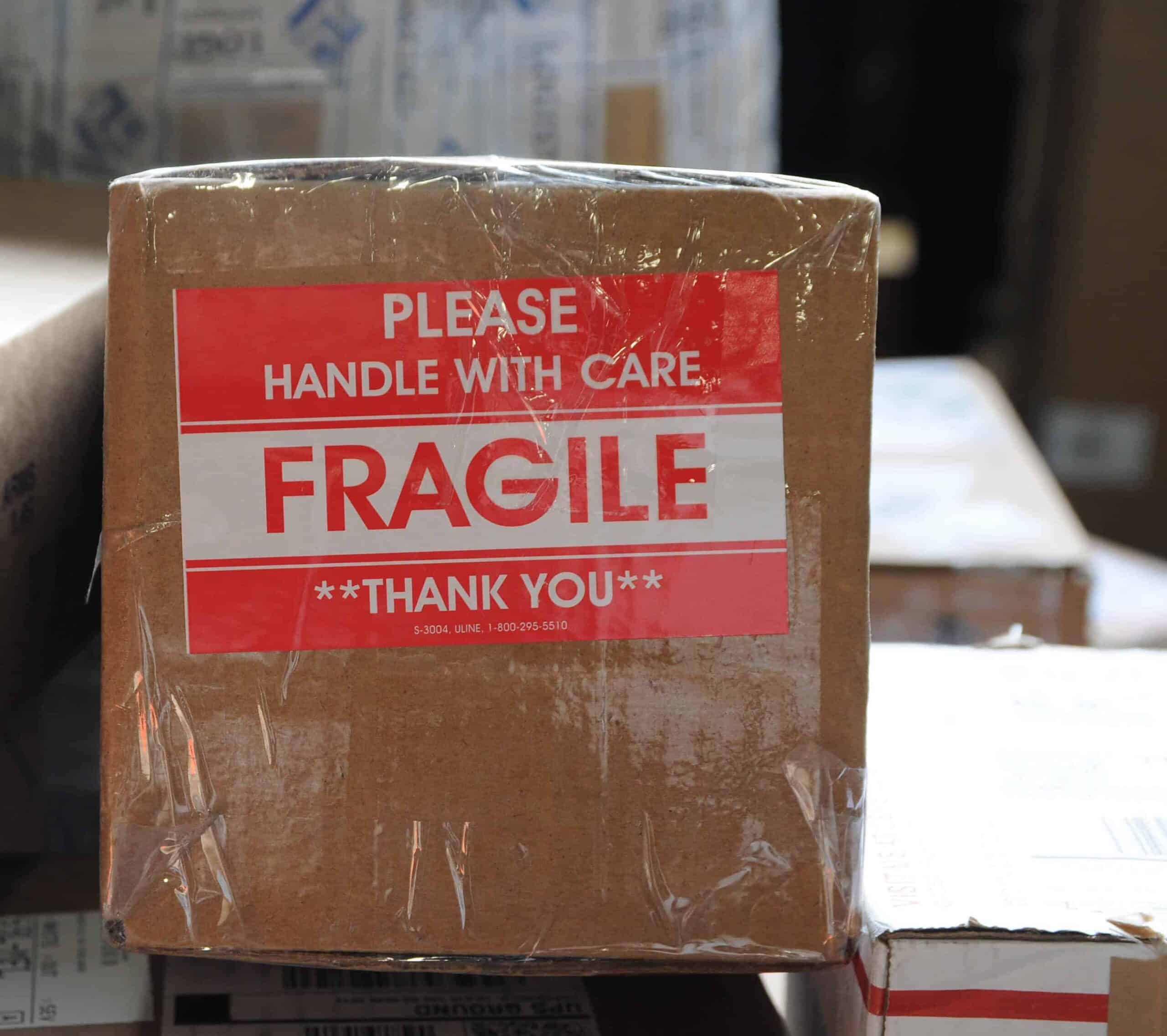
Devanning best practices
To ensure your container devanning process is as efficient and effective as possible, consider implementing these best practices:

PRO TIP: Partner with an experienced 3PL like Red Stag Fulfillment to access specialized expertise, equipment, and infrastructure for efficient devanning. A reputable 3PL can handle the entire process, from pre-arrival planning to final delivery, while ensuring compliance with safety regulations and industry best practices.
Invest in the right equipment and technology
Having the right tools and technology is crucial for streamlining the unpacking process.
Investing in high-quality equipment (e.g., forklifts, pallet jacks) and the latest technology (e.g., automated conveyor systems, robotics) improves the speed, accuracy, and safety of your unpacking operations.
Provide employee training
Your devanning team is the backbone of the process, so providing comprehensive training on the following is essential. Make sure everyone is on the same page regarding the following considerations:

Proper handling techniques

Safety protocols

Warehouse and logistics management

Best practices for unloading and organizing goods.
Empowering your employees with the knowledge and skills to excel improves productivity and reduces the risk of accidents or errors.
Continuously improve and optimize processes
Assess and optimize your devanning operations regularly to maintain a competitive edge.
Here’s how:

Conduct audits to identify areas for improvement.

Implement new technologies or processes to streamline workflow.

Gather team feedback to identify pain points and potential solutions.
Adopting a mindset of continuous improvement makes sure your unpacking process remains efficient, effective, and adaptable to changing business needs.
Common devanning challenges and how to overcome them
While devanning is a critical process for efficient supply chain operations, it comes with its own set of challenges.
Here are some common issues businesses face during unpacking and strategies to overcome them.

Key takeaway: To prevent damage to goods during devanning, implement proper handling techniques, invest in appropriate equipment, and establish strict quality control measures. Proper training and careful processes minimize the risk of product damage and associated costs.
Inefficient space utilization
Poor organization and stacking during the unpacking process can lead to inefficient use of warehouse space.
To optimize your warehouse space:

Develop a strategic plan for unloading and storing goods based on their characteristics and final destination.

Use appropriate shelving and storage systems to maximize vertical space.

Implement an inventory management system to track and monitor stock levels and locations.
Delays and bottlenecks
Inefficiencies in your process can cause delays and bottlenecks that impact your entire supply chain.
To streamline operations:

Conduct regular audits to identify bottlenecks or inefficiencies.

Invest in automation and technology for faster unloading and sorting.

Collaborate closely with suppliers and carriers to ensure timely and accurate deliveries.
Safety hazards
Devanning involves the use of heavy equipment and manual handling, which can pose safety risks to workers.
To prioritize safety:

ALERT: Always prioritize safety when devanning by providing comprehensive training, ensuring proper personal protective equipment usage, and conducting regular safety audits to identify and address potential hazards before they cause accidents.

Provide comprehensive safety training to all team members involved in devanning.

Ensure the use of appropriate personal protective equipment.

Conduct safety audits and address any identified hazards promptly.
Frequently asked questions about devanning

What is a devanning fee?
A devanning fee, also known as a destuffing or unloading fee, is a charge associated with the process of unloading cargo from a shipping container. This fee covers the labor and equipment costs involved in removing goods from the container, typically at a warehouse or distribution center. It’s often applied in international shipping when containers arrive at their destination port or inland location and need to be emptied for further distribution or storage of the goods.




How long does the devanning process take?
The duration of the devanning process can vary depending on several factors, such as the size of the shipment, the type of goods being handled, and the method of unpacking (manual versus automated).
On average, manual devanning can take anywhere from a few hours to a full day, while automated solutions can often complete the process in a matter of hours. However, the specific timeline will depend on your unique circumstances and the complexity of the operation.




Where are shipping containers devanned?
Devanning usually occurs at the destination warehouse for a full container load (FCL), which is when cargo takes up the full size of the container. Less than container load (LCL) shipping containers typically go to a destination container freight station for consolidation.




Is devanning right for my business?
Whether devanning services are right for your business will depend on various factors, including the size and nature of your operations, supply chain goals, and budget.
In general, devanning can be a valuable solution if you handle high volumes of containerized or palletized freight, need to quickly and efficiently unload goods for distribution or storage, want to optimize your supply chain processes and reduce costs, or require specialized handling or equipment for your cargo.
Ultimately, the decision to incorporate devanning into your supply chain strategy should be based on a careful assessment of your unique needs and goals.
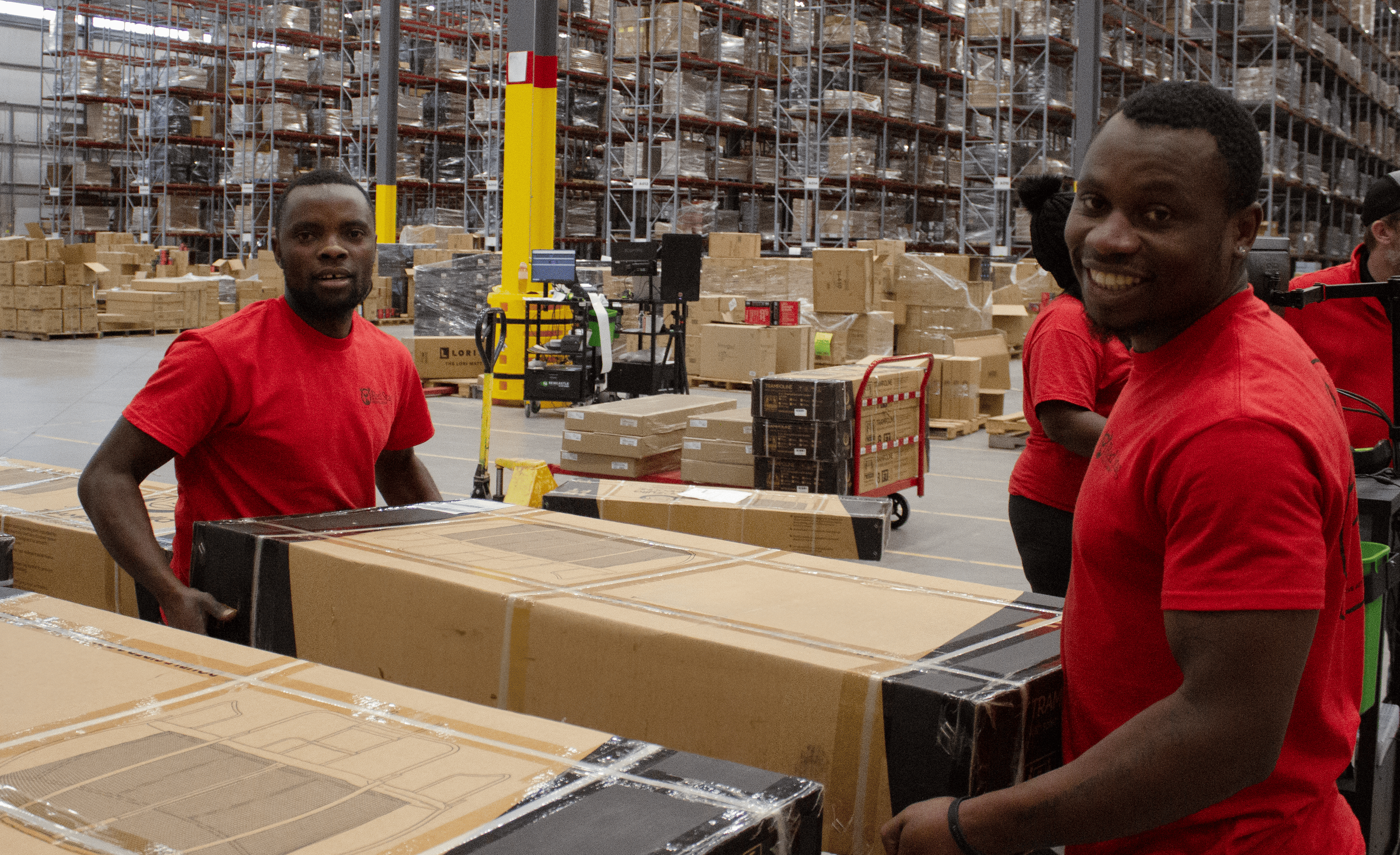
Your devanning partner: Red Stag Fulfillment
Red Stag Fulfillment offers expert devanning services for businesses of all sizes. Our team of experienced professionals has the knowledge, skills, and resources to handle the entire devanning process for you.
Here are just a few of the benefits of partnering with Red Stag Fulfillment:

Access to our deep expertise and proven track record in logistics and supply chain management

Use of state-of-the-art equipment and technology to streamline your unpacking process

Peace of mind knowing your goods are being handled safely, efficiently, and cost-effectively

You’re free to focus on other responsibilites while we handle the devanning and complex logistics.
Don’t let inefficient devanning hold your business back. Partner with the experienced team at Red Stag Fulfillment and experience the difference expert logistics support can make. Request a custom quote today.






